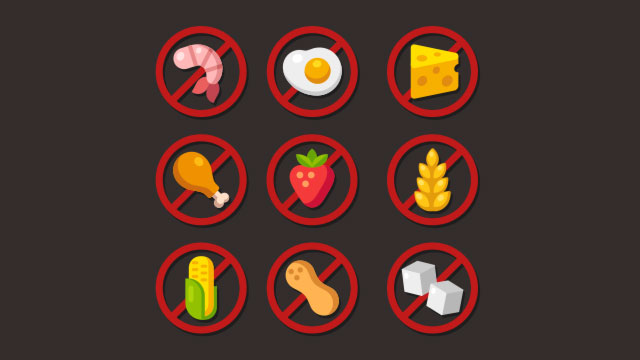
A study found that consumers with food allergy concerns often misunderstand food labels about allergens that say "may contain" or "manufactured on shared equipment." While they should avoid such products to prevent what could be a serious allergic reaction, up to 40 percent bought food items with precautionary allergen labels.
Food allergy affects approximately 8 percent of children and up to 2 percent of adults. Almost 40 percent of children with food allergy have experienced at least one life-threatening reaction.
The study, published in the Journal of Allergy and Clinical Immunology: In Practice, surveyed 6,584 consumers in the U.S. and Canada on their purchasing habits of food products with various labels about possible allergen exposure due to food processing. Most participants were caregivers of a food-allergic child, while the rest had food allergy themselves.
"Our findings underscore the challenges people with food allergies face in deciding if a food product is safe to eat," said senior author Ruchi Gupta, MD, MPH, pediatrician and researcher at Ann & Robert H. Lurie Children's Hospital of Chicago and associate professor of Pediatrics and Medicine at Northwestern University Feinberg School of Medicine. "Currently, precautionary allergen labeling is voluntary and the statements used lack consistency, making it more confusing for consumers. They also do not reflect how much allergen is in the product, which is something consumers need to know to assess food allergy risk."
Consumers had many misconceptions about precautionary labeling. A third falsely believed that precautionary allergen statements are based on the amounts of allergen in the product. Almost half believed that this type of food labeling is required by law, which is not the case.
The laws in the U.S. and Canada require labeling if a major food allergen is an intended ingredient. In the U.S., these include wheat, egg, milk, peanut, fish, crustaceans, soy, and tree nuts. Canadian regulation also adds sesame, mollusks, and mustard. Neither country requires labeling about unintended presence of allergens in foods as a result of processing on shared equipment, although many food manufacturers include a variety of precautionary statements on labels.
Purchasing habits varied depending on the precautionary phrase used on the label. Fewer respondents (11 percent) bought food with "may contain" labeling, while many more (40 percent) bought a product with "manufactured in a facility that also processes" statement.
"There is clearly a need for regulation and standardization of precautionary allergen labeling to help consumers make safe food choices," said Gupta.











